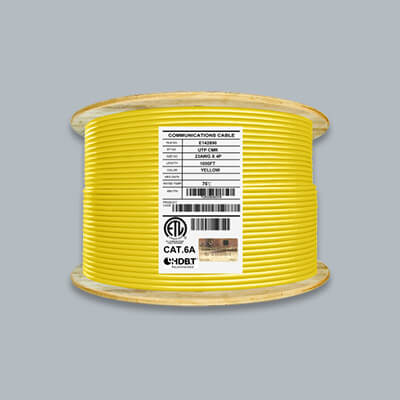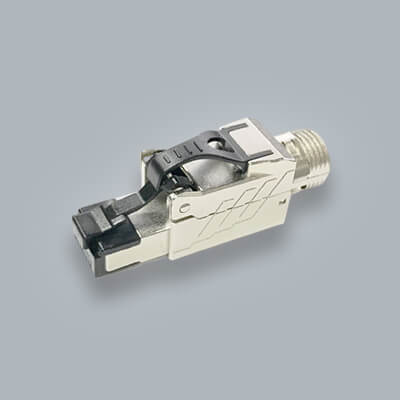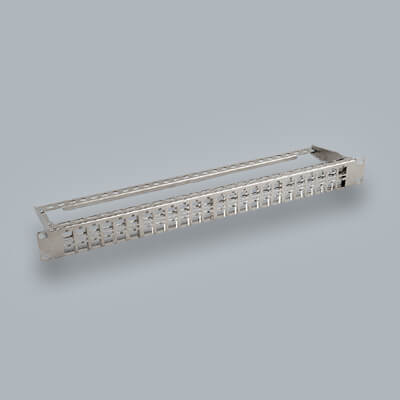How to Install an Ethernet Outlet

Adding an Ethernet outlet to your home is a great way to boost your network's reliability and speed, especially in areas where Wi-Fi might be weak or inconsistent. Whether you’re setting up a home office, gaming room, or simply want a more stable connection, installing an Ethernet jack is a project that you can tackle on your own with a few tools and some basic know-how. This guide will help walk you through the process.
1. Choose the Best Location for Your Ethernet Outlet
The first step in your installation is deciding where to place the Ethernet outlet. Consider the following:
- Proximity to Networking Hardware: Choose a location that’s close to your router or switch. This minimizes the length of the cable run and reduces potential signal loss.
- Convenience: Install the outlet in a place where it will be easily accessible and near the devices that will use the connection, such as behind a desk or near your entertainment center.
- Aesthetics: Position the outlet in a low, unobtrusive spot on the wall, ideally close to an existing electrical outlet for symmetry and ease of use.
Tip: Use an electronic stud finder to locate studs in the wall. Place the Ethernet outlet either between or on the side of a stud to avoid drilling into it later.
2. Prepare the Wall for Installation
Once you’ve chosen the ideal spot, it’s time to prepare the wall:
- Mark the Spot: Use a pencil to mark the exact location where you want the outlet. Ensure it’s visible enough so you won’t lose track while cutting.
- Trace the Mounting Bracket: Place the outlet’s mounting bracket against the wall where you’ve marked. Trace around the inside of the bracket to create an outline. This will guide you when cutting the hole for the outlet.
- Cut the Hole: Use a utility knife or drywall saw to carefully cut along the traced outline. Be sure to make precise cuts to avoid making the hole too large.
Safety Tip: Turn off the power to any nearby electrical circuits before cutting into the wall. This reduces the risk of accidental electrical shock.
3. Run the Ethernet Cable
With the wall prepared, the next step is to run the Ethernet cable from your network hardware to the outlet location. You can use bulk network cable for this step:
- Drill Access Holes: Depending on your setup, you may need to drill a hole through the floor or ceiling to route the cable between different levels of your home. Use a 1/2-inch drill bit to create a pathway.
- Feed the Cable: Carefully thread the Ethernet cable through the drilled holes and walls. If you’re running the cable vertically between floors, it’s easier to start at the top and feed the cable downward.
- Avoid Interference: Keep the Ethernet cable away from electrical lines and other potential sources of interference. If crossing an electrical line is unavoidable, do so at a right angle to minimize interference.
Tip: If you’re installing multiple cables, bundle them together with tape to keep them organized as you pull them through the walls.
4. Terminate the Ethernet Cable
Now that your cable is in place, it’s time to terminate it at the wall outlet using keystone jacks:
- Strip the Cable: Strip about 2 inches of the outer jacket from the Ethernet cable using a cable stripper. Be careful not to nick the inner wires.
- Organize the Wires: Inside the cable, you’ll find four twisted pairs of wires. Untwist these pairs and arrange them according to the color-coded wiring scheme for your keystone connector—either T568A or T568B. Just make sure you use the same standard on both ends of the cable.
- Punch Down the Wires: Insert each wire into the correct slot on the keystone connector. Use a punch-down tool to secure the wires in place, ensuring a solid connection that slices through the wire’s insulation.
Tip: A punch-down tool with a cutting edge will trim the excess wire as you punch it down, leaving a neat finish.
5. Install the Wall Plate
With the cable terminated, you’re almost done. Now, install ethernet wall plates:
- Attach the Keystone Connector: Snap the wired keystone connector into the back of the wall plate.
- Secure the Wall Plate: Place the wall plate over the mounting bracket in the wall and secure it with the provided screws. Ensure it sits flush against the wall for a clean, professional look.
Final Tip: Test your connection with a cable tester before finishing up to ensure everything is working correctly. This can save you time and hassle later if there’s an issue with the wiring.
6. Test Your Installation
Before you call it a day, it’s crucial to test the new Ethernet connection:
- Use a Cable Tester: A basic cable tester will confirm the integrity of your connection by checking for continuity and proper wiring. If any issues arise, you may need to re-punch the wires or check for any damage to the cable.
- Connect Your Devices: Plug a device, such as a laptop, directly into the new Ethernet jack and ensure it connects to the network properly. This will verify that your installation was successful and that your devices are receiving a strong signal.
Tools Tip: For all your Ethernet cable needs, including punch-down tools and cable testers, check out ethernet cable tools.
Conclusion
Installing an Ethernet outlet in your home is a manageable DIY project that can significantly improve your network's reliability and speed. By carefully planning the location, running the cable properly, and following the steps to terminate and test the connection, you can ensure a professional-quality installation that will serve your networking needs for years to come.





